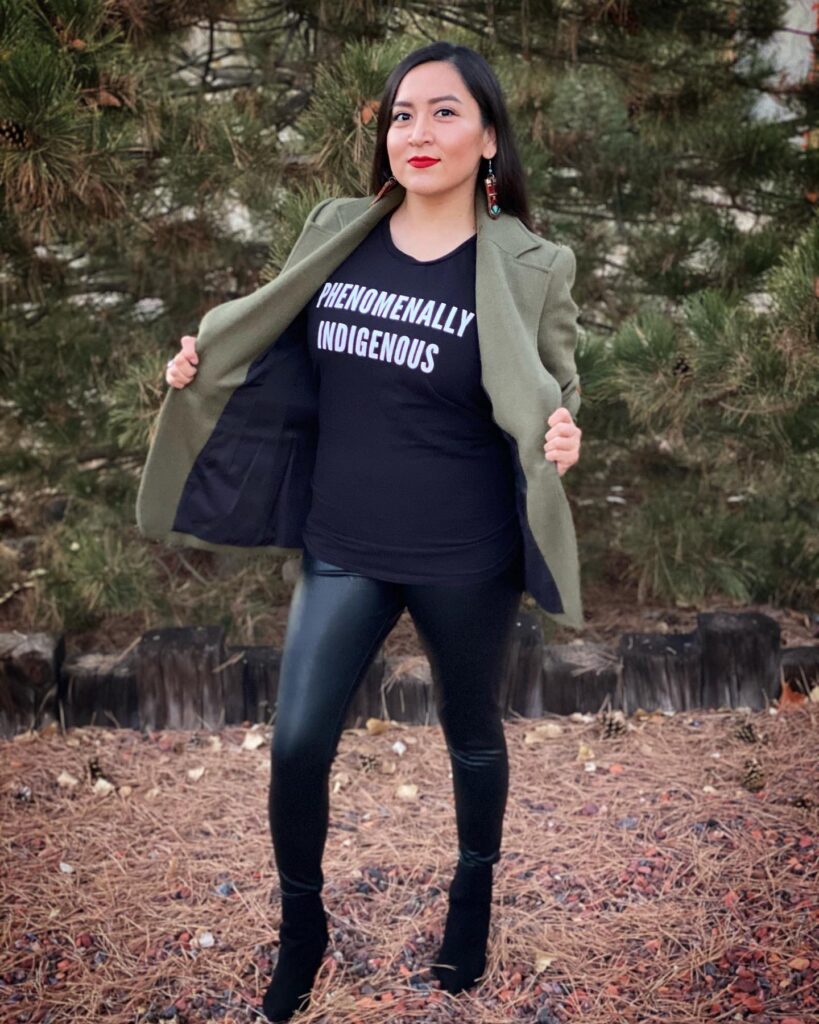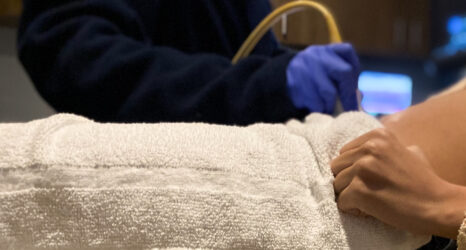Updated Feb. 4 at 2:15 p.m. PT.
As the Biden-Harris administration begins its first 100 days, Indian Country looks to the Biden-Harris Plan for Tribal Nations to hold the newly elected officials accountable. The cancellation of the Keystone XL Pipeline is a promising first action, but there is more to be done.

It was a troubling mid-summer evening as I sat reading the daily infection count and increasing death toll to my mother who had just arrived home from work. She just completed 30 years working for the Shiprock Indian Health Service, where she now hears helicopters coming and going, taking Diné COVID patients outside of their homelands with no guarantee of returning.
Each night thereafter, the death toll began to climb and it increasingly became very emotional for us and our communities across Dinétah (Navajo lands). I sat there wondering when politicians would flock to Arizona and my nation to campaign to a vulnerable people battling an invisible monster. When would they unveil their promises to Indian Country to win the votes of the nation’s original peoples?
Several months later, on the campaign trail, President Joe Biden and Vice President Kamala Harris released a promising plan for tribal nations, noticeably more in fleshed out than the Trump administration’s plan. It pointed to several crucial points we prioritize in Indian Country:
- strengthening the Nation-to-Nation relationship between tribal nations and the federal government;
- providing reliable, affordable, quality health care and addressing health disparities;
- restoring tribal lands, addressing climate change, and safeguarding natural and cultural resources;
- and last but not least, ensuring Native communities are safer and tackling the crisis of violence against Native women, children and the elderly.
While these areas of work are important to start with, we have more specific expectations for the new administration. We expect them to be more ambitious, yet sincere, about the plans they’re setting out to accomplish with tribes, tribal leaders, and community advocates and allies.
Providing Quality Health Care to Indian Country
COVID-19 is killing Native Americans at a faster rate than any other community in the United States, according to a shocking new report from The Guardian: One in every 475 Indigenous people in the U.S. has died since the pandemic began (and this is likely an undercount), compared to one in every 825 white Americans and one in every 645 Black Americans.
Native American communities are looking to the Biden-Harris administration to follow through on providing quality health care and addressing both short-term and systemic health disparities. For far too long, Indian Health Service, a federally-run program and treaty right, has been chronically underfunded and under-resourced. Through the pandemic, we’ve seen the results of this failed system that has left our nations and people vulnerable and without a reliable system to combat a disease taking the precious lives of elders who hold treasured ancestral knowledge and languages.
The Biden-Harris administration must invest more in health care for tribal communities, as well as urban Indian health centers, which tend to be nonprofits funded by grant dollars. Approximately 70 percent of Native Americans live outside of reservations nowadays and should still receive quality health care provided by the federal government, as indicated in our treaties.
Prioritize Native Americans for Vaccine Distribution
In addition to providing better health care overall, Native American communities and individuals should be prioritized for COVID-19 vaccinations. It is no secret that communities of color have been disproportionately affected throughout this historic pandemic, and Native American communities have been a focal point as we continue to fight for the survival of our languages and cultures. The Native American population has been decimated since the invasion of European colonizers—now only making up 2.4 percent of the population across Turtle Island, the original homelands of our ancestors, now known as the United States.
Since first contact, we’ve been fighting for our existence and the revitalization of our ancestral ways, which has seen significant progress in the last 15 years. The pandemic poses a serious setback and threat to our revered elders, and subsequently, the preservation of our languages and ceremonial ways. As the virus continues to ravage our communities, it only makes sense for the first peoples of this land to be prioritized in the vaccine rollout because it is the right thing to do, but also, to invest in the ancestral knowledge that will help humanity in the climate crisis and the fight to save Mother Earth.
Funding Language Restoration
Related to the preservation of ancestral knowledge, the new administration should also be thinking about allocating funds for tribal nations to put towards language restoration. Language revitalization programs have been a priority for many Native American communities—much time, energy and funding has been invested in these projects to increase the population of Native language speakers across tribal nations. This work will see the impact and setback in the coming years, and it is of great concern to tribal communities. We hope to work with the new administration to proactively mitigate the damage to Native American cultural ways.
Protect Native Land and Invest in Infrastructure
As the attention turned to the Navajo Nation in late spring, the rest of the world learned of the reservation’s broken infrastructure. Nearly 30 percent of Navajo Nation households did not have access to running water and nearly 40 percent of Navajo Nation households were not electrified. This lack of access to basic household utilities was a barrier for many Diné people who were being told to simply stay home and wash their hands for 20-30 seconds. For some people, that was virtually impossible.
Moving forward, the Biden-Harris administration, working alongside tribal leaders of the Navajo Nation and other tribal nations that face the same challenges, must address these appalling circumstances and get at the root cause of such living conditions.
In assessing the reasons that the virus spread so rapidly across rural Navajo Nation, many overlook the fact that much of Navajo land has been mined for uranium and coal, and drilled for oil. This damage to our homelands has left much of our waters dried up and contaminated. It’s also contaminated the bodies of many of our people who have worked most of their lives in coal mines, and our elders who were exposed to unsafe amounts of radiation in the uranium mines. These chemically toxic work environments left our people with underlying respiratory health conditions, leaving them in a losing battle against COVID-19.
We’ve been encouraged by the administration’s appointment of Representative Deb Haaland as secretary of the interior—but her confirmation would be further encouragement that the new administration wants to work sincerely with the Native American community, especially around assessing the root of broken infrastructures in order to find solutions and “build back better.” The cancellation of the Keystone XL Pipeline was also an encouraging decision in regards to strengthening the Nation-to-Nation relationship between the federal government and tribal nations.
To further strengthen these relationships, we expect the administration to shut down the Dakota Access Pipeline in North Dakota and Line 3 in Northern Minnesota. We also expect steps to be taken to protect and preserve Native American sacred sites from extractive industries, including the protection of Bears Ears in Utah and Oak Flat in Arizona.
I have great hope that the new administration will work diligently alongside Native American leaders, and continue to make intentional efforts towards inclusion—just as they did when they invited Navajo Nation President Jonathan Nez to take part in the inauguration’s national prayer ceremony focused on the lives lost to COVID-19. We have faced deep sorrow and loss as the novel coronavirus has ravaged the Navajo Nation and tribal communities across the country. Taking the time to acknowledge the 1,020 Navajo lives lost thus far, was a great reminder of the work ahead to recover from the devastation we’re still facing across Indian Country. It will be a tremendous undertaking for both tribal leaders and the Biden-Harris administration.
As we emerge from the crisis, we will take a comprehensive view of the reasons why we were so vulnerable and the lessons learned, and how we can catalyze homegrown leadership to become more resilient in the face of future crises. We hope to thrive in doing so with the support of the Biden-Harris administration.
You may also like:





